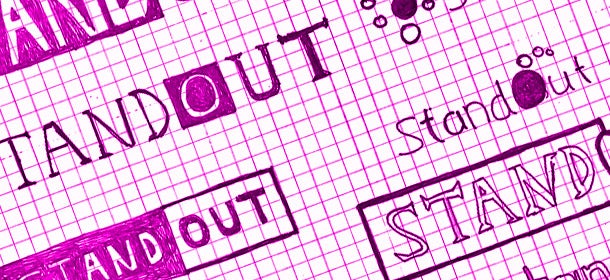
Your logo is the face of your company. It will often be the first thing people see and the main thing they remember. If asked, most of us could name at least a few iconic logos, whether it be Coca-Cola's cursive script or the namesake bird of Penguin Books.
And that's the whole point: You invest time in crafting the perfect logo so it will stick in people's minds.
"Other people have to be able to speak for your brand," says Jonah Berger, author of Contagious: Why Things Catch On (Simon & Schuster, 2013) and the James G. Campbell Associate Professor of Marketing at the Wharton School of the University of Pennsylvania. "You love your company, you think your company is great, but if you're not around, what are people going to be able to remember? And what are they going to tell others?"
The best logos have several things in common. Below are Berger's five keys to a successful logo.
1. Simplicity.
The first element of many killer logos is simplicity. "A good way to think about simplicity is how many moving pieces are there in the logo," Berger says. For instance, the old Apple logo was rainbow-colored, while the current one is rendered in solid black or simple grayscale. That newfound simplicity makes the logo easy to look at, which customers appreciate.
"The easier it is to process things, the more we like those things," Berger says. For that reason, most brands want to present a simple aesthetic that is easy for consumers to digest. Other major brands such as IKEA, IBM and Coca-Cola follow this rule. "It's hard to find iconic logos that have more than two or three colors," says Berger.
2. Brand consistency.

Your logo will communicate things to consumers about your brand, so you need to ensure that its design fits your company's overall message. Consider the Apple logo again. A few decades ago, Berger says, "rainbow colors had a certain association [with] being free and easygoing," but not anymore. Whereas Apple's old logo connoted the free spirit of an upstart that was taking on staid tech giants, its current position as one of the most valuable corporations in the world calls for the sleek, futuristic logo it has now.
At the same time, Apple's logo still seems "lighter" and "friendlier" than IBM's, which is more "dark and foreboding," says Berger. "That's consistent with the message that Apple wants to suggest: We are technology, but we're friendly technology, we're easy-to-use technology." If you're starting up a new company, Berger says, you should put some serious thought into your brand's key characteristics and how you want to convey them in your logo.
3. Memorability.

Memorability is the quality that makes your logo easy for customers to recall, which leads to repeat customers and word of mouth, says Berger. Your logo should "help them remember that you exist and what you stand for," he says.
Simplicity usually makes for memorable logos, but interestingly, "a little bit of incongruity" in your logo can aid people's memory, according to Berger. If Apple's logo didn't have a bite taken out of it, he says, "it might be easier to process, but [you'd] be less likely to remember, because it looks exactly like a million things you've seen before." Put a little something different or unexpected into your logo to make it stand out from the pack.
4. Remarkability.

The remarkability of a logo is what makes it "worthy of remark," cutting through the clutter of your industry to reach customers, Berger says. TalentBin, a search engine that helps companies with talent acquisition, has a logo that exemplifies this quality. The logo consists of a cartoonish purple squirrel riding a unicorn. While it may seem ridiculous, it has a specific meaning. "In the recruiting industry, a 'purple squirrel' is a type of person who is really hard to find," Berger says. "It's a way for them to show that they're insiders, that they know the culture."
The purple squirrel is not TalentBin's primary logo, but instead is used internally, at conferences and on promotional materials given to people in the recruiting industry. "If you're an established brand, you may not want a remarkable logo," Berger says. "But if you're a startup you need to take a little more risk."
5. Market testing.

Finally, don't just trust to your gut when designing a logo, Berger says. Do market research. One way to test various logo designs is to put out a survey on a service such as Amazon's Mechanical Turk. "We could throw up a quick study for an entrepreneur for $10, and within a day get a lot of feedback from different people about how heavy or light, fast or slow a logo would be," he says. The point is not to assume that a given logo is great. Before you print up those business cards, get some independent feedback about whether your logo is saying everything you want it to say.
Source: entrepreneur.com
Source: entrepreneur.com











0 opmerkings:
Post a Comment